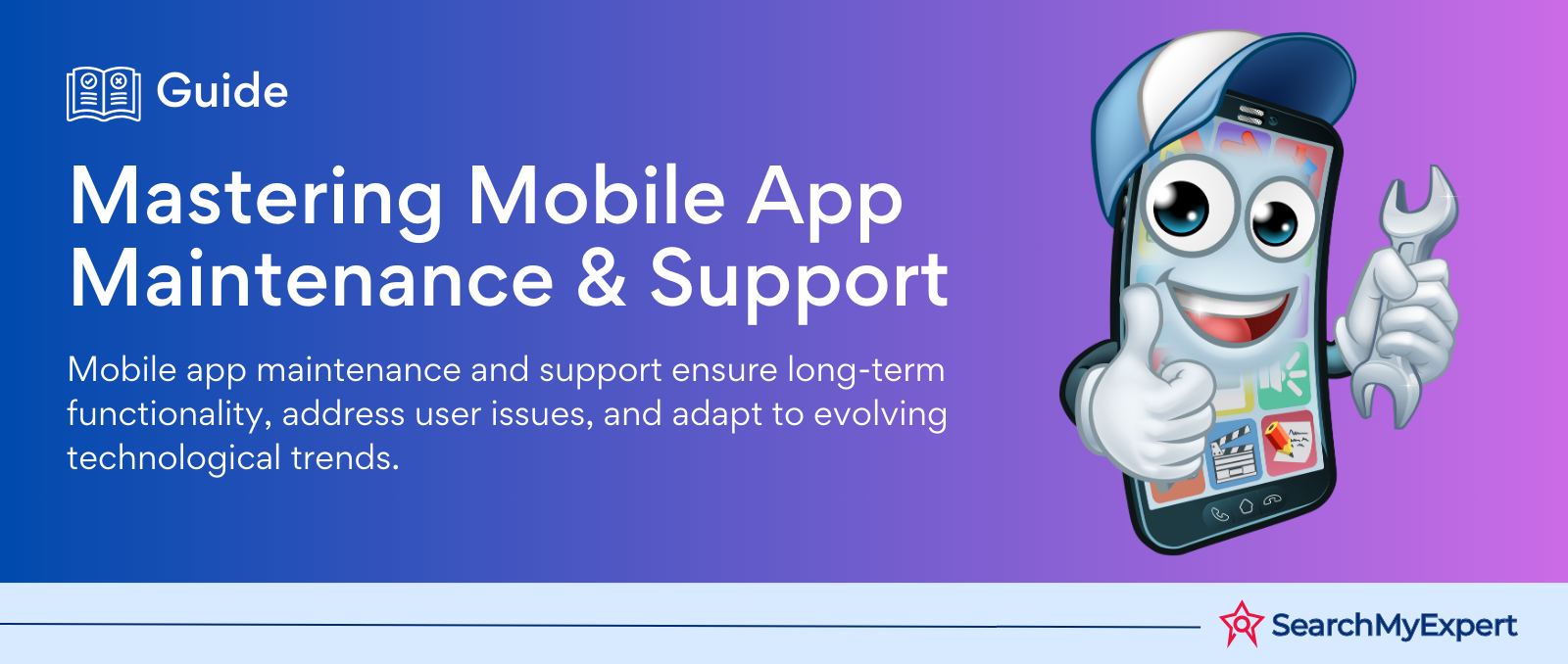Key Practices & Strategies for Securing Node.js Applications

Identify Potential Attack Vectors
When developing applications with Node.js, it's crucial to be aware of potential vulnerabilities and attack vectors that could compromise the security of your application. Understanding these risks not only helps in implementing robust security measures but also in tailoring your defenses to the specific threats your application might face, based on its data, functionality, and target audience.
Common Node.js Vulnerabilities and Attack Methods
Injection Attacks
- SQL Injection (SQLi): Attackers exploit vulnerabilities in input validation to inject malicious SQL queries into your application, manipulating your database.
- Cross-Site Scripting (XSS): This involves injecting malicious scripts into web pages viewed by other users, potentially stealing information or performing actions on their behalf.
- Command Injection: By exploiting insecure input validation, attackers can execute arbitrary commands on the server hosting the Node.js application.
File System Access
- Arbitrary File Read/Write: If an application improperly handles file operations, an attacker could read or write files on the server, leading to information disclosure or server compromise.
Authentication Bypasses
- Weak Authentication: Insufficiently protected authentication mechanisms can allow unauthorized access to sensitive parts of the application.
- Session Hijacking: Attackers can hijack user sessions to gain unauthorized access to the application.
Specific Threats Relevant to Your Application
- Data Sensitivity: Applications dealing with sensitive personal data (e.g., financial, and healthcare information) are attractive targets for data breaches.
- Functionality: Features like dynamic content generation or real-time data processing can introduce specific vulnerabilities, such as XSS or injection attacks.
- Target Audience: The nature of your target audience can influence the risk profile. Applications targeting businesses may face more sophisticated attacks aiming at financial gain or corporate espionage, while consumer-facing apps might be more susceptible to mass attacks seeking user data.
Tailoring Defenses
Understanding the common vulnerabilities and considering the specific threats relevant to your application are critical steps in securing your Node.js application. Implementing general security practices such as input validation, secure authentication mechanisms, and regular dependency updates is foundational. Beyond these, tailor your security measures to address the specific risks your application faces:
- For applications handling sensitive data, encryption in transit and at rest, along with strict access controls, are paramount.
- For applications with complex functionalities, adopting secure coding practices and regularly conducting security audits and penetration testing can identify and mitigate vulnerabilities.
- Understanding the profile and behaviors of your target audience can help in designing security measures that are both effective and user-friendly, ensuring compliance without compromising on security.
Implementing Strong Authentication and Authorization
Implementing strong authentication and authorization mechanisms is fundamental to securing a Node.js application. These measures ensure that only legitimate users can access your application and that they can only perform actions permitted to their roles. Here’s how to approach both aspects effectively.
User Authentication
Secure Password Hashing and Storage
Utilizing robust algorithms for password hashing and storage, like bcrypt or Argon2, is crucial. These algorithms are designed to securely hash passwords in such a way that even if data is compromised, the original passwords cannot be easily deciphered. They incorporate features like salting (adding random data to each password) and key stretching (repeatedly hashing passwords) to enhance security.
Multi-factor Authentication (MFA)
MFA adds layer of security by requiring users to provide two or more verification factors to gain access to their accounts. This is particularly important for actions that involve accessing or modifying sensitive information. MFA can combine something the user knows (a password), something the user has (a mobile device), and something the user is (biometric verification).
Implement Session Management and Expiration
Effective session management is key to maintaining user state and controlling access to the application. Implementing session expiration helps mitigate risks associated with stolen or intercepted tokens by limiting their validity period. Securely managing sessions involves generating unique session tokens upon login, securely storing these tokens, and invalidating them upon logout or after a predefined period.
Consider Role-Based Access Control (RBAC) for Granular Permissions
RBAC allows for defining roles within your application and assigning permissions to these roles. Users are then granted roles that determine what actions they can or cannot perform. This model is effective for applications requiring granular access control, ensuring users have access only to the resources necessary for their role.
Authorization
Use Authorization Libraries
Libraries like Express-jwt for working with JSON Web Tokens (JWTs) or Passport.js for implementing various authentication strategies can greatly simplify the process of adding secure authorization to your application. These libraries provide middleware that can verify authentication tokens, enforce role-based access controls, and integrate with various authentication providers.
Define Clear Rules for Resource Access
Establishing clear and concise rules for what each role in your application can and cannot do is crucial for effective authorization. This involves mapping out the resources within your application and defining which roles have read, write, update, or delete access to these resources. Regularly updating these rules as your application evolves is key to maintaining secure access control.
Regularly Review and Update Authorization Policies
As your application grows and changes, so too will your authorization needs. Regularly reviewing and updating your authorization policies ensures that access controls remain relevant and effective. This may involve adding new roles, adjusting permissions for existing roles, or removing access where necessary.
Protecting Against Injection Attacks
Protecting against injection attacks is a critical aspect of securing Node.js applications. These attacks exploit vulnerabilities by inserting malicious code into your system through user inputs. To mitigate these risks, it's important to implement strategies across different areas of interaction within your application.
Input Validation and Sanitization
Validate User Input
Validating user input involves checking that the data submitted by users matches the expected type, length, and format. This step is crucial for preventing injection attacks by ensuring that inputs do not contain unexpected or malicious data. Libraries like validator.js or joi offer a range of functions to facilitate rigorous validation of input data against specific criteria, helping to enforce data integrity and security.
Sanitize Input
Sanitizing input means processing the data to remove or neutralize any potentially harmful characters or code that could be used in an injection attack. This includes escaping HTML entities to prevent cross-site scripting (XSS) attacks and removing unwanted script tags or attributes. Input sanitization acts as a safeguard, ensuring that even if malicious data passes validation checks, it is rendered harmless before being processed or stored by the application.
Prepared Statements or Query Builders
Use Prepared Statements
Prepared statements and parameterized queries are effective defenses against SQL injection attacks. They work by clearly separating the SQL query structure from the data inputs, ensuring that user input is treated strictly as data, not executable code. This separation prevents attackers from altering the query structure through malicious input.
Query Builders
Query builders also help prevent SQL injection by constructing SQL queries programmatically through an API that automatically handles data binding and escaping. By ensuring that user input can never interfere with the query structure, query builders provide a robust way to interact with databases safely.
Command-Line Argument Validation
Validate Command-Line Arguments
When your application executes external commands based on user input, it's essential to validate those command-line arguments rigorously. This validation should confirm that the arguments conform to the expected format and do not contain unexpected sequences or characters that could be exploited to execute arbitrary commands.
Sanitize Arguments
Sanitizing command-line arguments involves stripping out or escaping characters that could be interpreted by the shell as control characters for command execution. This is crucial for preventing shell injection attacks, where attackers attempt to execute unauthorized commands on the server by injecting malicious input.
Securing File System Access and Data Handling
Ensuring the security of file system access and the handling of sensitive data is pivotal for safeguarding Node.js applications from unauthorized access and potential data breaches. Implementing robust security measures in these areas involves a multi-layered approach, encompassing secure file permissions, data encryption, and rigorous input validation and sanitization.
Secure File Permissions
Set Appropriate File Permissions
Managing file permissions effectively is essential to restrict access based on user roles. Utilizing system commands like chmod on UNIX-like systems allows administrators to define who can read, write, or execute files. This practice is vital for preventing unauthorized access or modifications to sensitive files.
Avoid Storing Sensitive Data in Plain Text
Storing sensitive information such as passwords, API keys, or personal user data in plain text can lead to serious security vulnerabilities. It's important to employ secure storage solutions that encrypt this data or use environment variables and secure secrets management systems to handle sensitive information securely.
Data Encryption
Encrypt Sensitive Data at Rest
Encryption of sensitive data at rest is crucial for protecting it from being compromised. Utilizing libraries like bcrypt for password hashing or sodium-native for general encryption ensures that sensitive data is stored in a format that is unreadable without the corresponding decryption key.
Use Appropriate Encryption Algorithms and Key Management Practices
Choosing strong and widely accepted encryption algorithms is critical for the effective encryption of data. Additionally, implementing sound key management practices, including the secure generation, storage, rotation, and disposal of encryption keys, is essential for maintaining the overall security of encrypted data.
Input Validation and Sanitization
Apply to File Paths and Filenames
To mitigate the risk of path traversal attacks, it's important to rigorously validate and sanitize inputs related to file paths and filenames. This involves checking that these inputs strictly conform to expected and safe patterns and removing or neutralizing any potentially harmful characters. Such precautions prevent attackers from manipulating file paths to access unauthorized directories or files.
Securing Node.js Packages and Dependencies
Securing the packages and dependencies in a Node.js application is a critical step in protecting against vulnerabilities and ensuring the overall security of the application. Given the vast ecosystem of Node.js packages, it's vital to adopt strategies that ensure the integrity and security of these components.
Use a Secure Package Manager
Use npm audit or Yarn audit
Both npm and Yarn include tools (npm audit and Yarn audit, respectively) designed to scan your project's dependencies for known vulnerabilities. Regularly running these audits helps identify and address security issues in packages that your application depends on. These tools provide insights into the severity of vulnerabilities and offer recommendations for mitigation, such as updating to a more secure version of the package.
Consider Using a Secure Package Registry
For teams requiring additional security and control over their package management, using a secure package registry like npm Enterprise or Verdaccio can be beneficial. These registries offer features like private packages, improved reliability, and additional security measures, helping organizations protect their code and manage dependencies more securely.
Keep Dependencies Up-to-Date
Update Dependencies Regularly
Keeping dependencies up-to-date is one of the simplest yet most effective strategies for securing your Node.js application. This involves regularly updating your project's dependencies to incorporate security patches and bug fixes. While manually updating packages is possible, it can become cumbersome for projects with a large number of dependencies.
Consider Using Tools Like Renovate
Automated dependency update tools, such as Renovate, can streamline the process of keeping your dependencies current. These tools can be configured to automatically create pull requests for updates, making it easier to review and merge changes. This automation helps ensure that your application benefits from the latest security patches without requiring constant manual oversight.
Review Third-Party Code
Carefully Review the Code of Third-party Libraries
Before integrating third-party libraries into your application, it's important to perform a thorough review of their code, documentation, and community feedback. Look for signs of active maintenance, such as regular updates and responses to issues. Additionally, consider the library's popularity and the reputation of its maintainers. Integrating well-maintained, widely used libraries can reduce the risk of security vulnerabilities.
Implementing Security Best Practices
Implementing security best practices is fundamental to developing and maintaining secure Node.js applications. These practices encompass everything from adhering to secure coding guidelines and leveraging security-focused frameworks and libraries, to ensuring continuous security monitoring. Here’s how to approach each of these critical areas:
Secure Coding Practices
Follow Secure Coding Guidelines
Adhering to established secure coding guidelines, such as those outlined in the OWASP Node.js Top 10, is crucial for developers. These guidelines highlight common security pitfalls specific to Node.js development, such as injection attacks, improper authentication, and insecure deserialization, providing strategies to avoid them. Understanding and implementing these recommendations helps in mitigating vulnerabilities within your application.
Avoid Common Security Pitfalls
Developers should be vigilant against common security issues like insecure direct object references (IDORs) and buffer overflows. IDORs can lead to unauthorized access to data by manipulating input values, while buffer overflows can compromise the application’s stability and security. Practicing defensive coding and validating all inputs are key strategies in preventing these vulnerabilities.
Use Security-Focused Frameworks
Frameworks with Built-in Security Features
Frameworks such as Express.js or Fastify offer built-in security features and middleware support that can simplify the implementation of security measures in your application. For instance, they provide mechanisms for secure cookie handling, HTTPS support, and protection against cross-site scripting (XSS) and request forgery (CSRF).
Utilize Libraries for Specific Security Needs
Incorporating libraries like helmet.js can enhance your application’s security by setting various HTTP headers to protect against common attacks. Similarly, libraries such as express-rate-limit help prevent brute-force attacks by limiting the number of requests a user can make to your API within a given timeframe, mitigating potential denial-of-service (DoS) attacks.
Continuous Security Monitoring
Application Logging and Monitoring
Utilizing logging tools like Pino or Winston is essential for effective application monitoring and security. These tools facilitate the logging of application behavior and errors, which is critical for diagnosing issues and identifying suspicious activities. Configuring these tools to capture detailed logs without exposing sensitive information is a delicate balance that needs careful consideration.
Regularly Review Logs
Regular monitoring and review of logs are vital for the early detection of potential security issues or breaches. Setting up alerts for anomalous patterns or errors can help in promptly addressing security threats. Regular log analysis, ideally automated to some extent, can uncover trends that indicate security weaknesses or ongoing attacks, allowing for timely interventions.
Staying Informed and Updated
Maintaining the security of Node.js applications is an ongoing process that requires staying informed about the latest developments in security practices, vulnerabilities, and updates. Engaging with the community and committing to continuous learning are essential steps in ensuring your application remains secure against emerging threats. Here’s how to approach staying informed and updated:
Security Updates
Subscribe to Security Advisories and Newsletters
Keeping abreast of the latest security advisories is crucial for promptly addressing vulnerabilities that may affect your application. Subscribing to security advisories from Node.js, dependency package maintainers, and other relevant technology newsletters can provide early warnings about vulnerabilities and recommendations for mitigation or patching.
Stay Up-to-Date on Security Trends and Vulnerabilities
In addition to advisories, staying informed about broader security trends and emerging vulnerabilities helps you anticipate and defend against potential threats. Following reputable security blogs, attending webinars, and participating in security forums can enhance your understanding of the current security landscape.
Community Engagement
Participate in the Node.js Security Community
Engaging with the Node.js security community allows you to share knowledge and learn from the experiences of others. This can include participating in online forums, contributing to or reviewing open-source security tools, and attending meetups or conferences focused on Node.js and web security. Such engagement not only helps in solving your own security challenges but also contributes to the overall health of the ecosystem.
Share Knowledge
Sharing your security experiences and insights through blogs, talks, or open-source contributions can help others learn from your successes and mistakes. Collaborative knowledge sharing is a powerful tool for improving application security across the Node.js community.
Conclusion
Securing Node.js applications is a dynamic and ongoing process that demands vigilance, proactive measures, and a commitment to best practices. From implementing secure coding guidelines and managing packages and dependencies safely to engaging with the security community and investing in continuous learning, each step is crucial for building and maintaining secure applications. By subscribing to security advisories, participating in community discussions, and staying informed about the latest security trends and vulnerabilities, developers can significantly enhance their applications' defenses against the evolving landscape of cyber threats.
Transform your digital infrastructure with
Node JS Development Service Firms.
share this page if you liked it 😊
Other Related Blogs

Mastering Docker for App Development: A Comprehensive Guide to Benefits, Use-Cases, and Alternatives
STAY UP TO DATE
GET PATH'S LATEST
Receive bi-weekly updates from the SME, and get a heads up on upcoming events.
Contact Us











